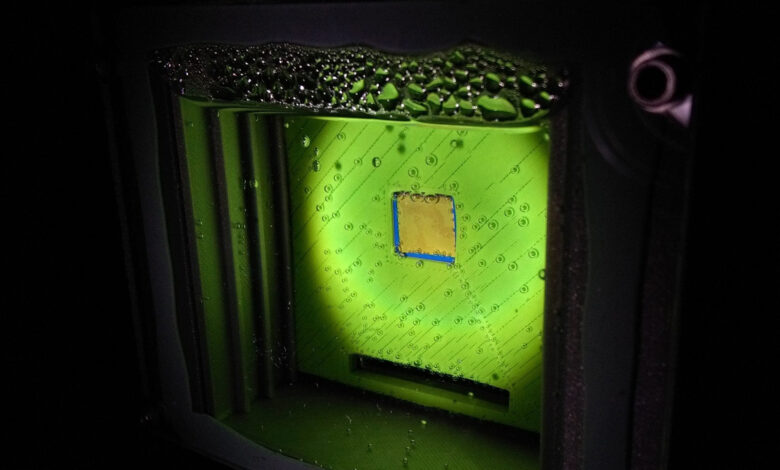An Artificial Leaf to Transform Sunlight into Liquid Fuel

Let’s imagine for a moment the possibility of leveraging the processes that plants carry out to produce energy. The goal? Applying them to the production of pollution-free chemical compounds. Ore, more specifically, that an artificial equivalent to photosynthesis would enable the production of fuel without polluting the environment. And all that only with the aid of sunlight and a catalyzer. That is what professor Erwin Meisner and his team from the Chemistry department at the Univesity of Cambridge, UK, have devised. The researchers drew their inspiration from photosynthesis to create a new type of artificial leaves able to produce syngas, a synthetic kind of gas. Unlike alternative processes, this innovative technology does not release any carbon dioxide or other waste. The results of this innovative technology project, which has taken seven years to complete, were published in the scientific journal Nature Materials.
The actual process to generate syngas –used as a fundamental element in the production of fuel, drugs, plastics, and fertilizers– is comparatively simple. Just like with photosynthesis, the critical ingredient is sunlight, although the technology can work even in cloudy, overcast, and even rainy days. The “leaf” carries two light absorbers together with a cobalt-based catalyst, an abundant and low-cost material, much cheaper than the precious metals like platinum or silver usually employed. The light absorbers, in turn, are made of perovskite and produce a strong electric current. Once the device is immersed in water, the first light absorber releases oxygen jointly with the cobalt catalyzer. At the same time, the other reduces carbon dioxide and water into carbon monoxide and hydrogen, which form the syngas mixture.
According to the developers of this artificial “leaf,” previous iterations created by other researchers were limited to the production of hydrogen. Now this new technology opens the door to the production of sustainable energy. Technically, the syngas production method devised by Cambridge researchers is another type of solar power. The only difference lies in the fact that, instead of producing electricity, the outcome is liquid fuel. As syngas is only the primary element in the production of liquid fuels, the next step for Meisner and his team is creating the fuel straight from a water and carbon dioxide reaction.
An ally for electric motors
Although electric cars are here to stay, heavy transport vehicles are still a long way from joining the revolution. In the case of boats and airplanes, electric motors are not powerful or efficient enough. The solution lies in using liquified gas or sustainable synthetic fuels that can power conventional engines and turbines without toxic or greenhouse gas emissions. Another advantage of the production of synthetic fuels is that they consume carbon dioxide in the process. In theory, carbon capture technologies could be used, diverting emissions from factories to the production of this type of fuel.
Source: University of Cambridge



